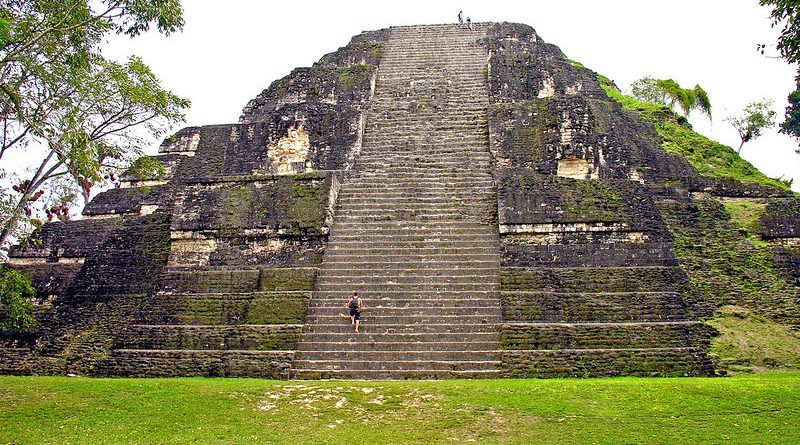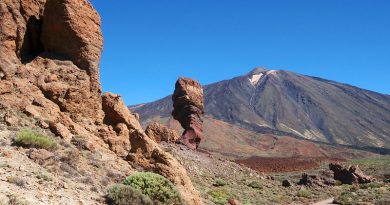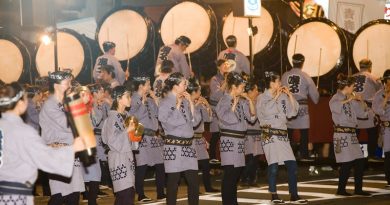The Ancient Ruins of La Ruta Maya
Take a journey along or through La Ruta Maya to visit some of the most spectacular sites from the ancient Mayan civilization which took hold on the Yucatan Peninsula in Mexico and in the neighbouring countries of Belize and Guatemala.
There are thousands of Mayan sites and hundreds are still only partly discovered excavated or still buried in thick jungle .
Here is a selection :
MEXICO
Chichen Itza: The Mayan ruins at Chichen Itza are the most often visited by tourists. UNESCO described this site as “one of the most impressive testimonies to the Maya-Toltec civilization of the Yucatán.” The Mexican government has restored 18 structures; the Pyramid Kukulcan is perhaps the most often visited. During the March 21 and September 21 equinoxes, shadows at sunset on the steps of the pyramid portray the likeness of a descending snake. Chichen Itza, with expansive views of the region from atop its tallest structures, provides the best example of architecture from the Classic period of A.D. 600 to 800.
Coba: a jungle-covered archaeological zone. Coba was an important city of about 60,000 people and also reflects architectural designs of the Classic period. Its attraction to tourists lies in its jungle location surrounded by five lakes. Coba’s proximity to water gave the city its name, “water stirred by wind.” The Nohoch Mul pyramid is the tallest on the Yucatán peninsula with 120 steps to its summit. Visitors can view other ruins peeking above the jungle from atop the pyramid. Also nestled in the jungle near the Quintana Roo-Campeche state border is Becan. It features 20 construction sites now largely deserted. Another jungle city is Bonampak, which is known for its murals of royal court rituals and human sacrifices.
Tulum: In the Post-Classic period, Coba declined as a major city, with the coastal city and fortress of Tulum, south of Cancun on the Yucatán Peninsula, rising as the cultural centre. The art of stone carving thrived in Coba, but was largely abandoned in Tulum. However, Tulum’s overall decorative architecture makes these ruins a year-round destination for tourists. At Tulum, visitors usually combine walking tours with beach activities since a beach stairway sits next to the El Castillo pyramid.
Oxtankah, Dzibanche and Kohunlich: Three important archaeological sites are the Oxtankah, Dzibanche and Kohunlich ruins in south Quintana Roo. Dzibanche and Kohunlich are deep in the jungle and a two-hour trip from Costa Maya. The ruins are famous for excavations to unearth Mayan tools and other items, but they do not attract large numbers of tourists because of the distance and the final rugged 20 miles required to reach the sites. They are some of the best examples of Mayan architecture, however. Oxtankah was a recent discovery. Archaeologists uncovered it in 1913 but left it untouched until 1983, when excavation projects began. Oxtankah was an important trade centre and offers examples of sunken palaces and temples, as well as the remains of perhaps the oldest Spanish church on the Yucatán Peninsula.
BELIZE
Altun Ha (Northern Belize): One of the most easily accessible Mayan ruins from Belize City, Altun Ha is a small yet well-preserved site featuring two large central plazas surrounded by midsized pyramids and mounds. Only a few of the most imposing temples, tombs, and pyramids have been uncovered and rebuilt; hundreds more lie under the jungle foliage. Many jade, pearl, and obsidian artifacts have been discovered here, including the unique jade-head sculpture of Kinich Ahau (the Mayan sun god), the largest carved jade piece from the Mayan era.
Lamanai (Northern Belize): One of the more interesting and picturesque Mayan ruins in Belize, Lamanai features three large pyramids, a couple of residential areas, various restored stelae, and open plazas, as well as a small and unique ball court. Moreover, the ruins of two 16th-century Spanish churches are nearby. The site is set on the banks of the New River Lagoon. Since it was still occupied by the Maya when the Spanish arrived, Lamanai is one of the few sites in Belize to retain its traditional name.
Xunantunich (Cayo District and Western Belize): Xunantunich is an impressive, well-excavated, and easily accessible Mayan site, close to San Ignacio. Xunantunich was a thriving Mayan city during the Classic Period, from about A.D. 600 to 900. You’ll find carved stelae and one very tall main pyramid here. To reach the ruins, you must cross the Mopan River aboard a tiny hand-cranked car-ferry in the village of San José Succotz.
El Pilar (Cayo District and Western Belize): El Pilar just may be the most underappreciated major Mayan city in Mesoamerica. The site is huge, with over 25 known plazas, covering some 40 hectares (100 acres) that straddle the Belize and Guatemala border. Excavation and exploration here are in their early stages, and in time, El Pilar could join the ranks of Caracol and Tikal as one of the major Classic Mayan sites of this region.
Caracol (Cayo District and Western Belize): Caracol (http://www.caracol.org)
is the largest known Mayan archaeological site in Belize, and one of the great Mayan city-states of the Classic era. Located deep within the Chiquibil Forest Reserve, the ruins are not nearly as well excavated as those at Tikal, Xunantunich, or any number of other sites. However, this is part of Caracol’s charm. The main pyramid here, Caana or “Sky Palace,” stands some 41m (136 ft.) high; it is the tallest Mayan building in Belize and still the tallest man-made structure in the country.
Tikal: Just over the Belizean border in neighbouringGuatemala, Tikal is the grandest of the surviving Classic Mayan cities. Tikal is far more extensively excavated than any ruins in Belize. The pyramids here are some of the most perfect examples of ceremonial architecture in the Mayan world. The peaks of several temples poke through the dense rainforest canopy. Toucans and parrots fly about, and the loudest noise you’ll hear is the guttural call of howler monkeys. In its heyday, the city probably covered as much as 65 sq. km (25 sq. miles) and supported a population of over 100,000.
GUATEMALA
Tikal: one of the best-known Mayan ruins in Guatemala. Many of the structures were erected around 700 A.D., during the height of the Maya civilization. Tikal National Park encompasses a large chunk of the jungle in the northeastern region of the country. There are more than 3,000 structures in the park, but most visitors head to the central site of Tikal to see the Great Plaza, the Temple of the Great Jaguar and the Temple of Masks. The spectacular Temple of the Great Jaguar measures 150 feet in height. There are many other ruins here, including altars, administrative buildings and palaces spread around the grounds. The surrounding rainforest provides a mysterious setting for this remote tourist attraction, and the only sounds you’re likely to hear besides the chatter of visitors are parrot calls and shrieking howler monkeys.
El Mirador: located near the Mexican border in the northern Guatemalan district of El Peten. This site has the greatest concentration of pre-Classic Mayan ruins in the world and is believed to be the cradle of Mayan civilization. Pre-Classic Mayan ruins date back as far as 2,000 B.C. and do not include the more elaborate structures built during the height of Mayan development in the A.D. era.
Thick vegetation still covers many of the ruins around El Mirador, and the remote location makes this a much less crowded tourist destination than Tikal. One of the main ruins at El Mirador is the El Tigre complex, a looming pyramid measuring more than 180 feet in height. The other primary point of interest is the La Danta complex, a building that reaches 230 feet.
The Yaxha: the ruins recently increased in popularity after being featured as the site of the reality TV show “Survivor” in 2005, but still remains relatively uncrowded, making it ideal for trekkers in search of solitude. This is the third largest Mayan site in Guatemala behind El Mirador and Tikal. The ruins are situated in the Peten jungle near Lake Yaxha. Some of the highlights include multiple pyramid temples and a Mayan observatory. The views of the lake from atop the temples also make this a highly attractive destination.
Uaxactun: one of the oldest Mayan cities located roughly 20 miles north of Tikal. Some of the structures here date to 330 B.C., while others are from the Classic Maya period of between 300 and 900 A.D. Uaxactun’s main features are the four ruins built in alignment with the sunrise during equinoxes and solstices. These ruins establish Uaxactun as the primary site where the ancient Mayans developed their calendar through the study of astronomy.
Quirigua: a small archaeological site near Puerto Barrios in the Motagua Valley of Guatemala. Quirigua’s claim to fame is the large collection of stelae, or carved stones, erected as territorial markers and monuments to the deceased. The tallest stela figure in Quiriguá measures 35 feet, weighs more than 65 tons and is the largest Mayan stela in the world. Aside from the stelae, visitors can marvel at a tiny temple and the hieroglyphics carved into the rocks around the site.




